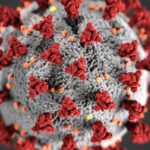1. Rapid antigen tests detected persons with high SARS-CoV-2 levels, enabling rapid response to positive test results.
2. Repeated testing should still be done for high-risk persons with initial negative rapid antigen tests.
Evidence Rating Level: 2 (Good)
Study Rundown: SARS-CoV-2 rapid antigen tests are becoming more valuable in terms of immediately identifying active SARS-CoV-2 infection with high viral levels, which can help further management such as isolation and stopping transmission. However, there is a gap In knowledge as to understanding the performance of rapid antigen tests when new SARS-CoV-2 variants emerge, such as the Omicron variant in December 2021. This study found that BinaxNOW rapid antigen tests could still detect high levels of SARS-CoV-2 during the Omicron surge in a community walk-up setting. This study was limited by factors such as the use of self-reported vaccine status, persons who were asymptomatic at the time of testing, and not assessing the evolution of RT-PCR and BinaxNOW test positivity over time. Nevertheless, these study’s findings are significant, as they demonstrate that rapid antigen testing can still detect high SARS-CoV-2 levels during the Omicron surge, through repeated testing should still be done for high-risk persons with an initial negative rapid antigen test result.
Click to read the study in AIM
Relevant Reading: Summary for Patients: PCR Testing Versus Rapid Antigen Testing at a Community Site During a COVID-19 Omicron Surge
In-Depth [cross sectional surveillance study]: This cross-sectional surveillance study utilized a free, walk-up, outdoor, urban community testing and vaccine site that predominantly served a Latinx community high impacted by Covid-19 in San Francisco. Patients who sought testing provided demographic characteristics, symptoms and onset date, vaccination status, the reason for testing, and informed consent were eligible for the study. Patients who were unable to provide informed consent or a valid sample were excluded from the study. The primary outcome measured was simultaneous BinaxNOW and RT-PCR from nasal, cheek, and throat swabs, including cycle threshold (Ct) measures, with a lower Ct value suggesting higher amounts of virus. Outcomes in the primary analysis were assessed via proportion testing and compared using differences in means. Overall, among 731 persons tested with nasal swabs, there were 40.5% positive results on RT-PCR, with 98.9% as the Omicron variant. The BinaxNOW rapid antigen test detected 95.2% (95% confidence interval [CI], 91% to 98%) of persons who tested positive on RT-PCR with a Ct value below 30, and detected 82.1% (95% CI, 77% to 87%) of those who tested positive on RT-PCR with a Ct value below 35 and detected 65.2% (95% CI, 60% to 71%) of all who were positive on RT-PCR, regardless of Ct value. For nasal and cheek swabs, BinaxNOW when using the cheek failed to detect 91% of specimens that were positive on the nasal swab with BinaxNOW. Among persons with both nasal and throat swabs, the BinaxNOW test detected 46.8% by the throat and 85% by the nose. Overall, this study demonstrated that the BinaxNOW rapid antigen test can detect persons with high SARS-CoV2 levels even during the Omicron surge, but that cheek and throat swabs should not replace nasal swabs. This enables the addition of rapid antigen tests to the diagnostic toolkit for SARS-CoV-2, through repeated testing should still be done for high-risk persons with an initial negative rapid antigen test result.
Image: PD
©2022 2 Minute Medicine, Inc. All rights reserved. No works may be reproduced without expressed written consent from 2 Minute Medicine, Inc. Inquire about licensing here. No article should be construed as medical advice and is not intended as such by the authors or by 2 Minute Medicine, Inc.


